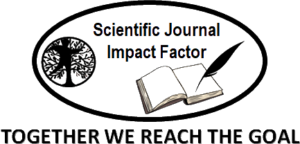Noninvasive prenatal Diagnosis (NIPD) Techniques of Down syndrome: A Review
A Down syndrome foetus is born with an additional copy of chromosome 21. (Trisomy 21). Down syndrome can cause intellectual disabilities, poor muscle tone, and unusual facial features in newborns.50% of patients having Down syndrome get heart problems. The condition, which is the most common hereditary cause of intellectual disability, is more common in children whose parents were 35 years old or older when they became pregnant. The most prevalent genetic basis for developmental abnormality and the main reason why women elect to get invasive prenatal diagnostics is Down’s syndrome (DS) which affects 1 in 691 live babies. New non-invasive diagnostics, however, have long been sought after because intrusive testing entails a 1% risk of miscarriage. Trisomy 21 (DS), which accounts for 53% of all confirmed chromosomal abnormalities, is the most frequent aneuploidy that is compatible with living and significantly contributes to mental impairment. During pregnancy, Down syndrome could be detected non-invasively. Since its introduction in the 1970s, testing procedures, recommendations, and screening alternatives have grown to encompass things like anatomical ultrasonography, maternal serum testing, and noninvasive prenatal testing. This article offers a summary of all currently available non-invasive techniques for diagnosing Down syndrome. One of the elements in the advancement of the noninvasive prenatal aneuploidies diagnosis has been cited as the discrepancy between maternal entire blood and foetal (placental) DNA.
The advancement of next-generation sequence (NGS) technology has rendered non-invasive prenatal diagnosis (NIPD) the most promising method currently available. The lack of thorough large-scale validation trials in low-risk pregnancies prevents the clinical implementation of NIPD for DS identification at this time. Prenatal screening is currently the first-line technique for detecting foetal aneuploidy. Even because DS can’t be diagnosed with screening, creating a more thorough screening approach can help to increase detection rates and consequently lower the number of women that undergo invasive treatments. This research first examined the progress in developing new screening markers before detailing how well the prenatal screening process has changed that since the adoption of maternal age as the primary “screening” test. Fetuses with Down syndrome are more likely to exhibit certain sonographic traits known as “soft indicators” for the disorder. Soft Down syndrome indications are typically found during second-trimester ultrasounds. These symptoms don’t necessarily mean that a baby has Down syndrome. Small morphological changes, most frequently trisomy 21, that raise the probability that the foetus has a chromosomal issue are known as soft indicators (Down syndrome).
DNA methylation is one of the potential diagnostic markers for trisomy 21 and other aneuploidies. It has been discussed how effectively the methylation DNA immunoprecipitation method works for enriching overly methylated foetal DNA. Differentially Methylated Regions (DMRs) have been identified as a result of research on the methylation differences between the foetus and the mother. Patients with trisomy 21 who are normal may have their condition appropriately detected using the fetal-specific methylation ratio approach. Maternal plasma may contain foetal DNA, which may be used for non-invasive prenatal diagnosis. Due to the minimal number of fetal-origin nucleic acids present, Any method used to isolate or detect foetal genetic information in maternal plasma would face significant technical difficulties.
This review article provides an overview of the state-of-the-art in the domain of noninvasive prenatal analysis of foetuses with Down syndrome as well as an outlook on new foetal markers and cutting-edge molecular methods that may one day be employed in the medical setting as reliable and secure options for women who choose noninvasive precise prenatal diagnosis. With the right medical attention and family support, children with Down syndrome can enjoy happy and fulfilling lives.
Keywords: Cell-free fetal DNA; Down syndrome; noninvasive prenatal diagnosis; trisomy 21, sonographic markers




















